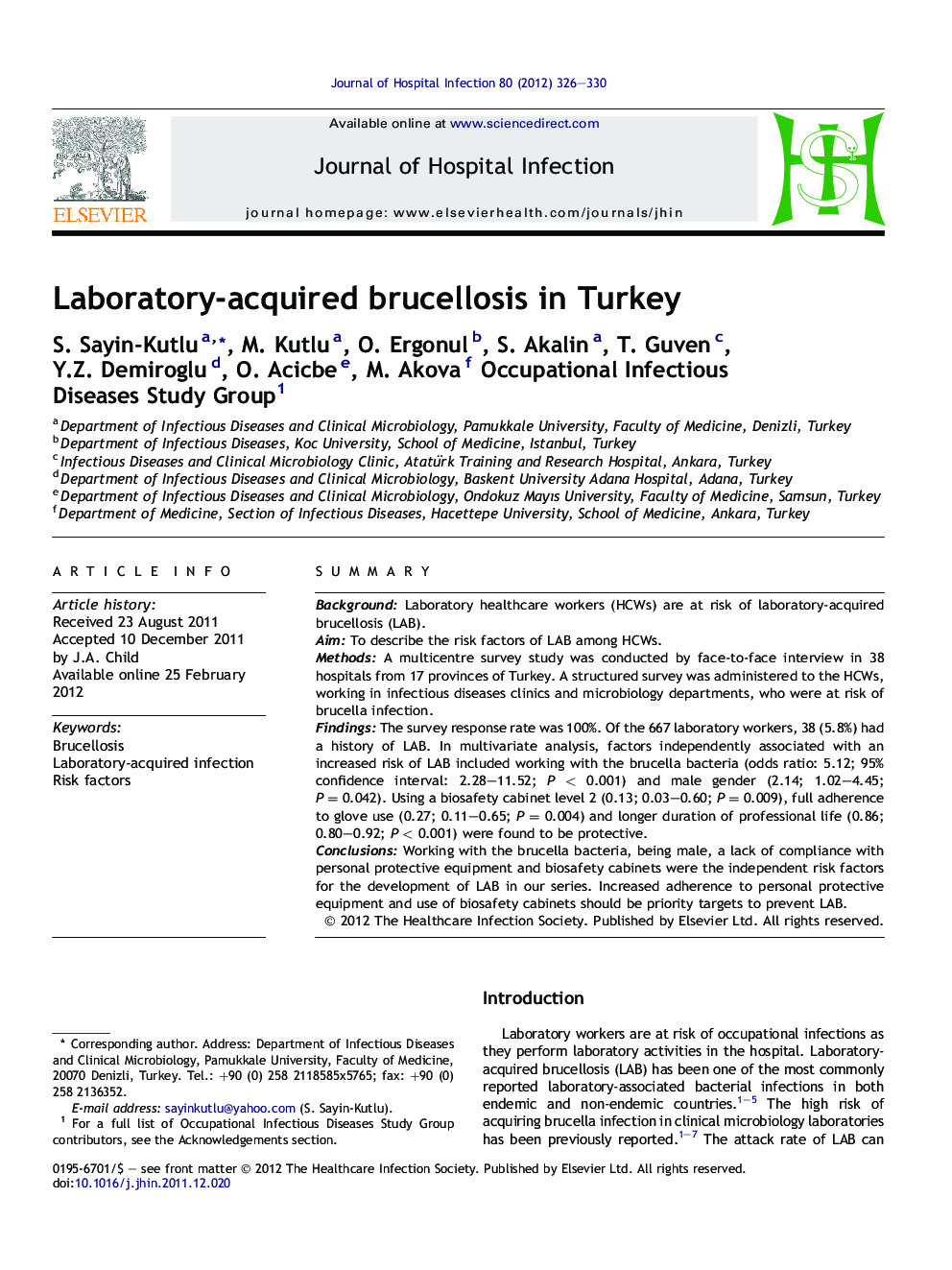| Article ID | Journal | Published Year | Pages | File Type |
|---|---|---|---|---|
| 3372377 | Journal of Hospital Infection | 2012 | 5 Pages |
SummaryBackgroundLaboratory healthcare workers (HCWs) are at risk of laboratory-acquired brucellosis (LAB).AimTo describe the risk factors of LAB among HCWs.MethodsA multicentre survey study was conducted by face-to-face interview in 38 hospitals from 17 provinces of Turkey. A structured survey was administered to the HCWs, working in infectious diseases clinics and microbiology departments, who were at risk of brucella infection.FindingsThe survey response rate was 100%. Of the 667 laboratory workers, 38 (5.8%) had a history of LAB. In multivariate analysis, factors independently associated with an increased risk of LAB included working with the brucella bacteria (odds ratio: 5.12; 95% confidence interval: 2.28–11.52; P < 0.001) and male gender (2.14; 1.02–4.45; P = 0.042). Using a biosafety cabinet level 2 (0.13; 0.03–0.60; P = 0.009), full adherence to glove use (0.27; 0.11–0.65; P = 0.004) and longer duration of professional life (0.86; 0.80–0.92; P < 0.001) were found to be protective.ConclusionsWorking with the brucella bacteria, being male, a lack of compliance with personal protective equipment and biosafety cabinets were the independent risk factors for the development of LAB in our series. Increased adherence to personal protective equipment and use of biosafety cabinets should be priority targets to prevent LAB.
